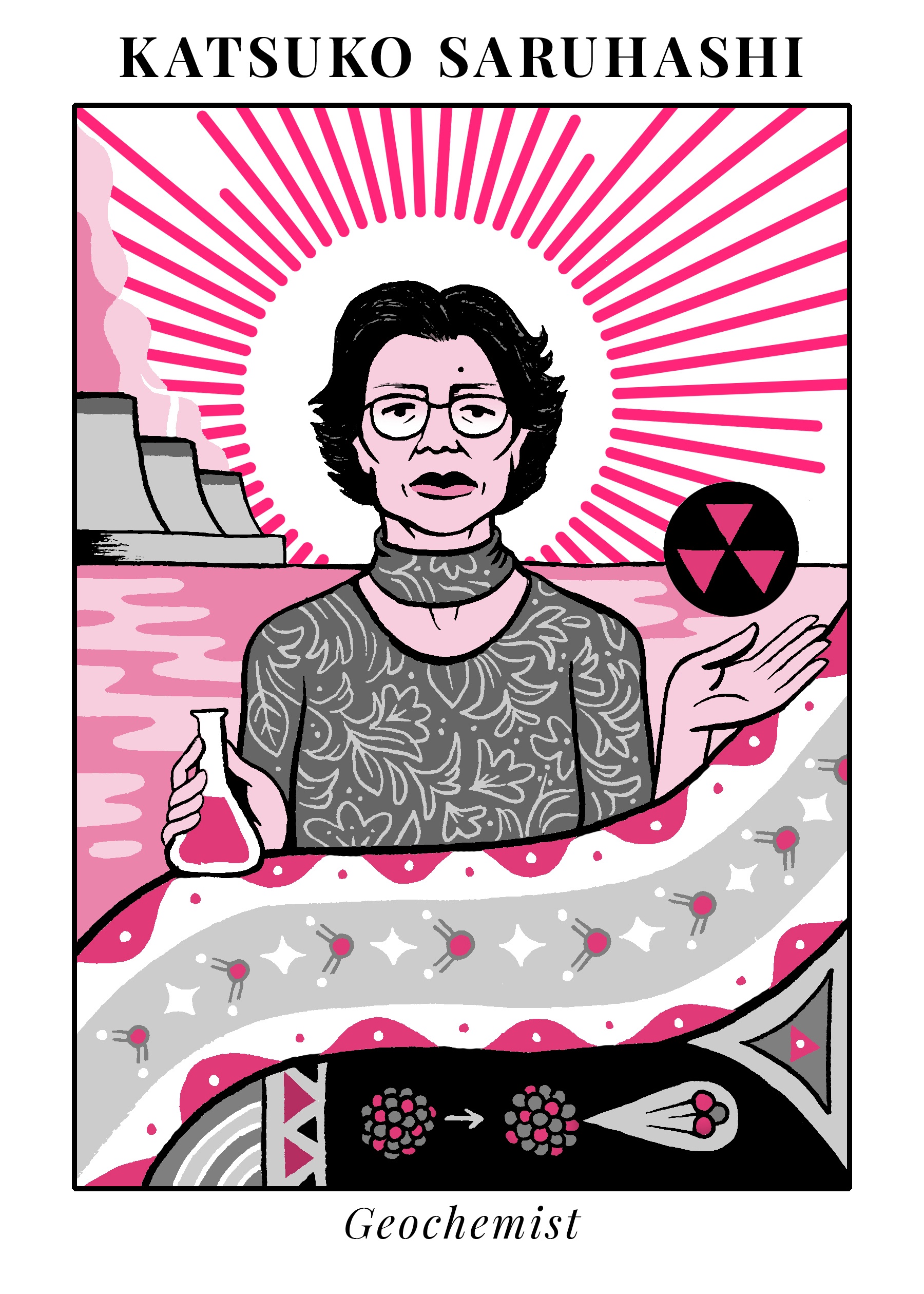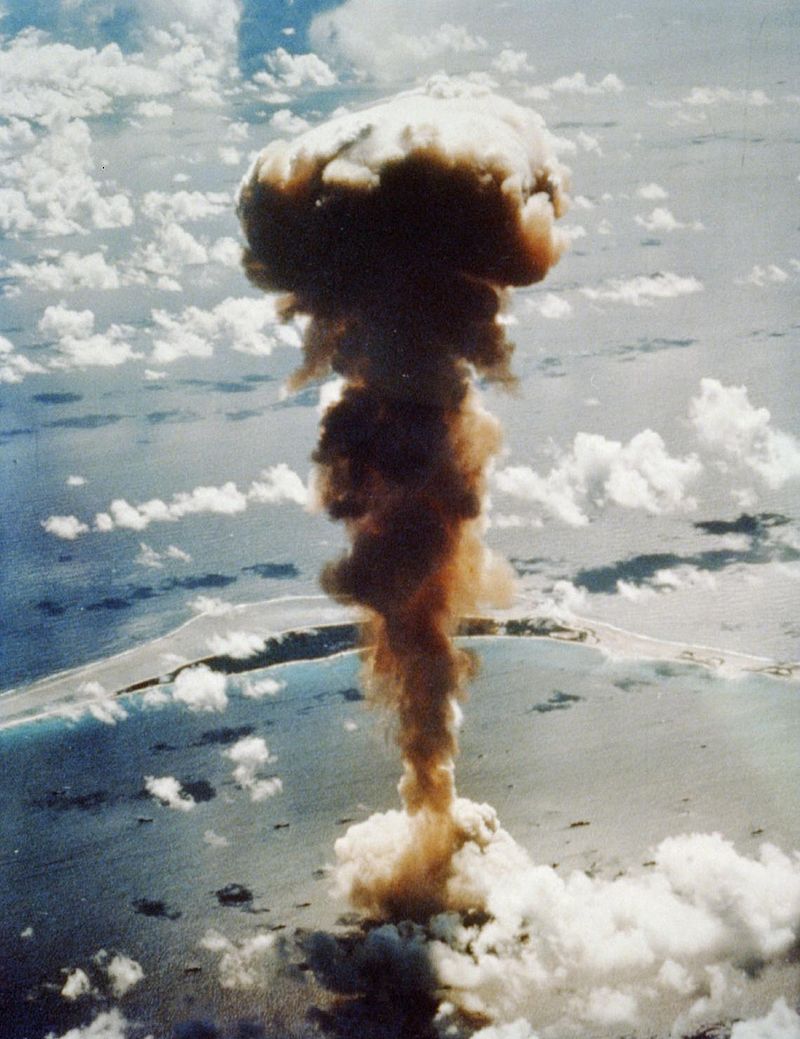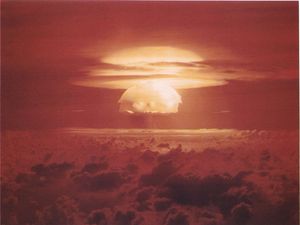Meet Katsuko Saruhashi, a resilient geochemist who detected nuclear fallout in the Pacific
Her deep belief that science and society were linked left a lasting impact
Matteo Farinella
Determining the measure of a great scientist is a challenge. Is it an enormous contribution to science, noted by awards and distinctions? Publications in peer-reviewed journals or keynotes at conferences? Serving as an expert to governments, effecting change on national and international policy? Or can this measure be more granular: beyond being a role model, to be present and provide sustaining mentorship, lifting up others?
No matter how you slice it, Katsuko Saruhashi is one such great scientist, and a woman who certainly lived up to her name, which translates to strong-minded or victorious in Japanese. Not only did she conduct groundbreaking research — developing the first method to measure carbon dioxide levels in seawater — but her work also made waves internationally, as she tracked and raised a global alarm on the dangers of nuclear testing. Throughout her 35-year career as a geochemist, she collected numerous awards and led the way for women to follow her in science.

Matteo Farinella
Tracking radiation
Saruhashi was born on March 22, 1920, in Tokyo, Japan. A shy and introverted young girl, she grew up curious: Lore has it that she was first drawn to science watching raindrops slide down the window in her primary school classroom, wondering what caused rain. Her parents were supportive of her education, to a point; ultimately, Saruhashi had to convince them to let her quit her job at 21 at an insurance firm to attend the Imperial Women’s College of Science, now Toho University. In a way, she had a little help from World War II: both she and her mother saw many women struggling without husbands or fathers, with little professional training to help them have successful careers. Realizing this, Saruhashi's mother encouraged her to gain technical knowledge herself and to achieve financial independence.
After graduating in 1943 with her undergraduate degree in chemistry, Saruhashi joined the Geochemistry Laboratory at the Meteorological Research Institute (now called the Japan Meteorological Agency). There, she studied not rain, but oceans, specifically carbon dioxide (CO2) levels in seawater. Saruhashi developed the first method for measuring CO2 using temperature, pH, and chlorinity, called Saruhashi’s Table. This method became a global standard. Perhaps more importantly, she discovered that the Pacific Ocean releases more carbon dioxide than it absorbs: a concept with dire consequences today as the climate changes.
Saruhashi also led the way in studying ocean-borne nuclear contamination. Although World War II had ended years before, the United States continued to carry out nuclear tests, particularly in the Pacific Ocean near Bikini Atoll, 2300 miles southwest of Japan. After several Japanese fishermen became mysteriously ill while out trawling downwind of the testing site in March 1954, the Japanese government asked Saruhashi and her colleagues at the Geochemical Laboratory to investigate.

Conducting a study like this was no easy task. “The amount of fallout that we are talking about is really tiny, and then we are talking about the vast ocean,” Toshihiro Higuchi , a historian at Georgetown University and expert on Cold War science, told The Verge. Tasked with developing more sensitive measurements, Saruhashi and her team ultimately found nuclear fallout didn't travel evenly throughout the ocean. They tracked ocean circulation patterns using radionuclides, discovering that currents pushed radiation-contaminated waters clockwise, from Bikini Atoll northwest towards Japan. As a result, fallout levels were much higher in Japan than along the western U.S.
Their results were stunning: the radioactive fallout released in the testing had reached Japan in just 18 months. If testing continued, the entire Pacific Ocean would be contaminated by 1969, proving that nuclear tests even conducted out in the middle of the ocean, seemingly in isolation, could have dangerous consequences.
Even now, more than 60 years later, Bikini Atoll is still unlivable.
These data, unsurprisingly, sparked controversy, and the U.S. Atomic Energy Force ultimately funded a lab swap, bringing Saruhashi to the Scripps Institute of Oceanography to compare the Japanese technique for measuring fallout with the American method, developed by oceanographer Theodore Folsom. Her method turned out to be more accurate, settling the science and providing the critical evidence needed to bring the U.S. and Soviet Union in agreement to end above-ground nuclear testing in 1963: an amazing accomplishment at the height of the Cold War. Saruhashi returned to Japan and later became the executive director of the Geochemical Laboratory in 1979.
From a wooden hut to the Saruhashi Prize
As a young scientist, Saruhashi was largely protected from the gender discrimination we so often hear about in science. This is largely due to her mentor at the Meteorological Research Institute, Yasuo Miyake, a prominent marine chemist and director of the Geochemistry Laboratory who had a strict no-tolerance policy for gender discrimination.
"I worked hard… I concentrated entirely on learning how to do science," Saruhashi told Fumiko Yonezawa, a fellow Japanese scientist who published a biography of her in 2009. "But that was not an effort I made as a woman to compete against men. I knew that by working hard, I could slowly unwrap the secrets of nature… this was such a joy… the sheer joy I enjoyed as a researcher."
This policy, however, did not follow her to the University of Tokyo, nor to Scripps. In Tokyo, a professor asked her to conduct microanalyses on Bikini snow, a white dust of contaminated calcium oxide from corals created by nuclear testing. First, though, he gave her other calcium carbonate samples “to check the accuracy of Saruhashi’s analysis,” according to a 2009 biography. History and nuclear weapons scholar Sumiko Hatakeyama observed that while it is possible the professor did this to conserve the material, there’s no evidence for that, suggesting instead that he was skeptical of her abilities.
Worse, though, was her experience at Scripps. After being invited by none other than U.S. Atomic Energy Force, she was asked by Folsom, her U.S.-based counterpart, to not commute to the institute every day; instead, she was provided a wooden hut to work in. Hatakeyama attributes this to not simply gender or racial discrimination, but complex geopolitical prejudice, writing, "whoever was involved in this misconduct may well have thought that Folsom, as a Western male figure representing the victorious nation, could not be shown to be inferior to a small Asiatic woman from a defeated nation."
Saruhashi’s work not only left a lasting impression in her field, but impacted the world as we know it, in part due to her deep belief that science and society were linked. Science should take its cues from society, she argued, in terms of research goals and priorities, and scientists bear social responsibility. She frequently engaged with the public, both teaching them about her work and listening to their opinions on what scientists should prioritize.

US Department of Energy
In addition to being the first woman to earn her PhD in chemistry at the University of Tokyo in 1957, Saruhashi was the first woman elected to the Science Council of Japan, the first woman to win Japan’s Miyake Prize for geochemistry, the Avon Special Prize for Women for promoting the peaceful use of nuclear power, and the Tanaka Prize from the Society of Sea Water Sciences.
She also leveraged her own success to help others. Early in her career, she founded the Society of Japanese Women Scientists: a place to recognize female scientists, but also a place to discuss and solve problems facing woman scientists. In 1981, she founded the Saruhashi Prize, a highly prestigious annual award given to Japanese women scientists in recognition for important contributions to the natural sciences.
“There are many women who have the ability to become great scientists," Saruhashi once said. "I would like to see the day when women can contribute to science and technology on an equal footing with men.”
Saruhashi died in September 2007 at the age of 87; on March 22nd, 20202, she would have turned 100. It seems strange that the problems she faced 60 years ago still feel so familiar; I wonder what she would think of science finally having its #MeToo moment. But in a time when science as a whole is thinking critically about to handle gender discrimination, Saruhashi serves as a strong role model for how to do amazing science, win the prize, and save the world.